The Camino de Santiago by bike

French Way
Primitive Way
Northern Way
Silver Way
Sanabrés way
Basque Way
Portuguese Way
Catalan Way through San Juan de la Peña
Baztan Way
English way
San Salvador Road
Epilogue to Fisterra and Muxía
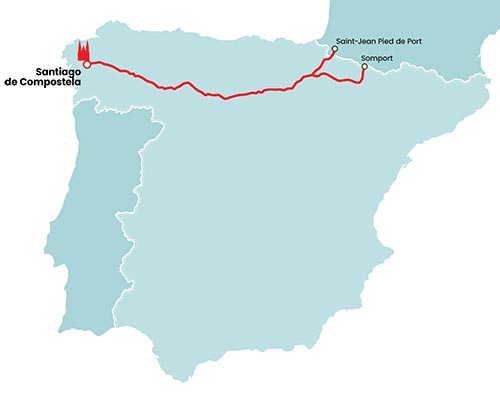
French Way
The most important and popular axis of the Xacobean pilgrimages
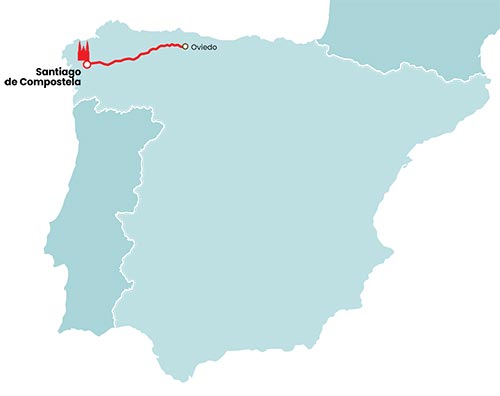
Primitive Way
Starting point to discover the path of the first known path
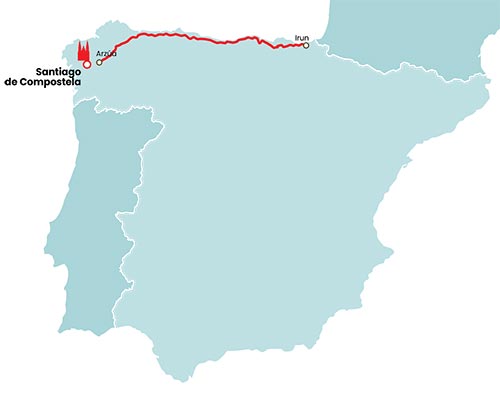
Northern Way
Old road and preferred by the European kings of the Middle Ages

Silver Way
The most important road from the south of the peninsula

Sanabrés way
Road connecting the center of the peninsula with northern Spain
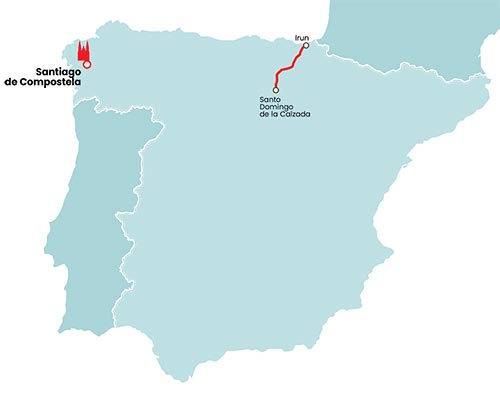
Basque Way
Basic xacobeo axis and entrance door to the center of the peninsula

Portuguese Way
The most important Portuguese Way and second road with more influx
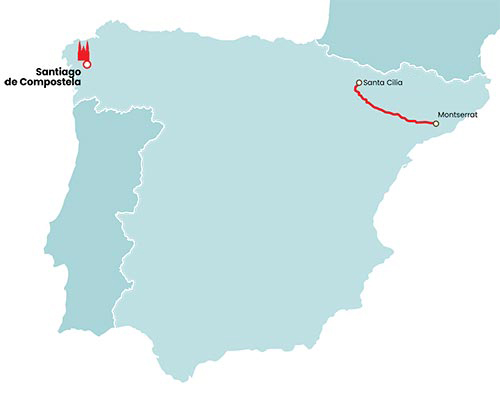
Catalan Way through San Juan de la Peña
Road that departs from Montserrat and joins others as it passes through Aragon
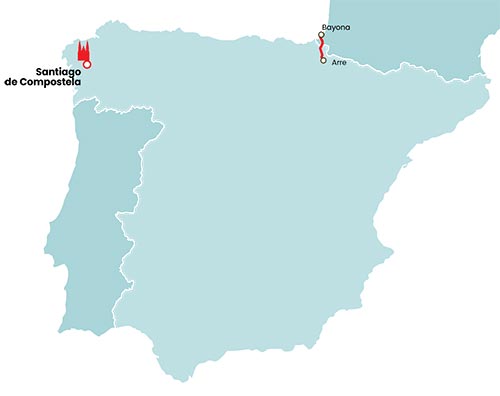
Baztan Way
Itinerary that converges with the French Way at the gates of Pamplona
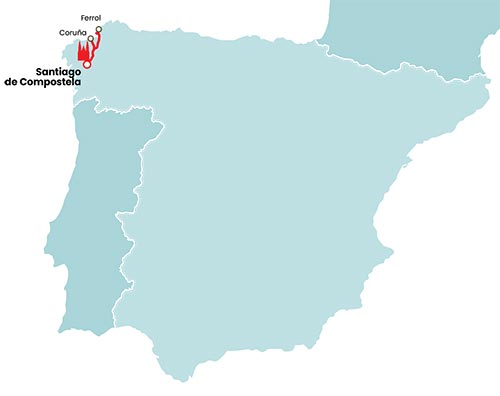
English way
Ferrol and A Coruña, two alternatives for the beginning of this route

San Salvador Road
Route from Parador Nacional San Marcos de León and Oviedo Cathedral

Epilogue to Fisterra and Muxía
Extension of the different roads from Santiago hata Fisterra and Muxia
Tips for cycling the Camino de Santiago
Before leaving it sets out the stages well
In the case of the Camino Francés are 760 kilometers (27 more if you start in San Juan de Pied de Port); the Camino Aragonés runs for 820 kilometers. The primitive route is relatively short, it is approximately 315 kilometers. The ideal is to do less miles per stage, but if possible by the roads. In general it is a technical journey with continuous ups and downs. Some sections, unfortunately, must be saved by road.
The route profile should be studied
All stages are not the same and therefore, in all stages your legs will not be charged the same (in this website you have profiles of all routes). It's a total of 800 kilometers, and you'll have to see how long you have to organize the days you count on.
Arrange luggage on the bike
The weight must be balanced so that the pedaling is as comfortable as possible. To do this, use saddles or grille on the back, a shoulder triangle to place under the saddle bar and store the tools, and something very practical is a bag to place on the handlebar, as you can store the documentation or the road routes there.
Hostels
The place chosen to stay is another factor that should influence route planning. Until 20.00h, walkers have a preference over cyclists. From that time onwards, cyclists have the same preference in hostels as those on foot. This is because if you walk into a crowded hostel, you have to go to the next hostel, which can be 10 or 15 kilometers away. This would take you two or three more hours of walking, but for a cyclist it would be half an hour of pedaling.
Stages
Establishing the route stages for cycling is a very personal exercise. There are a multitude of options and it depends on the expected time to perform it, the physical form, the choice of the bicycle, etc. It's not the same to ride a racing bike over asphalt, than with a mountain bike on roads. Nor is it the same to have a support car or not, as it is not the same to be loaded with packages on the bicycle than without them.
The division of stages presented in this Guide is designed to make it traditional, that is, by mountain bike, with luggage, and by roads whenever possible.
An average of 12 kilometres per hour
A walking pilgrim does an average of 5 kilometers per hour. An affordable average for a cyclist could be between 11 and 13 kilometers an hour. About 5 hours of daily effort to complete 60 kilometers.
In winter, major difficulties
90% of pilgrims choose to roll in the months of May to September. The high rainfall, especially in Galicia, makes getting into the Camino in the winter months a hard exercise, even more so if it is done by bicycle, where the pilgrim has to rotate in many sections by asphalt.
Advantages of Cycling the Road
Some of the advantages that you can take advantage of by making the Bike Path are:
- You will be able to easily escape the Camino de Santiago to find interesting nearby places.
- You will have more time to enjoy the most beautiful places on the Camino, to watch everything quickly.
- You'll have a vehicle to move around the cities where you peers, to do shopping, to visit the places, etc.